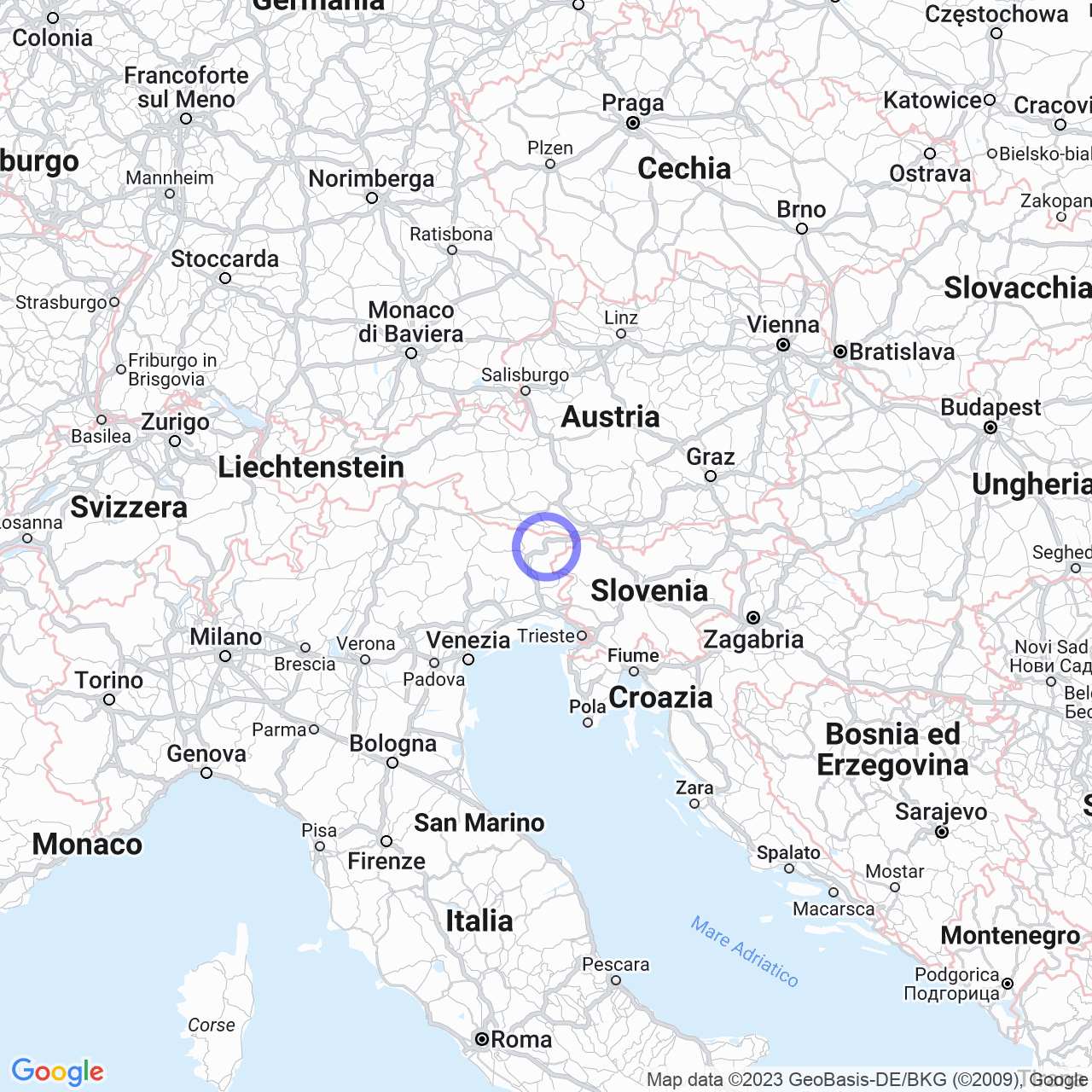Dogna
Dogna, the Small Town in the Mountains of Friuli
If you're looking for a hidden treasure in the heart of Friuli-Venezia Giulia, Dogna may be the place for you. With only 154 inhabitants, it is located in the Canal del Ferro, surrounded by majestic mountains such as Mount Zuc dal Bô, Lo Jôf di Dogna, and Lo Jôf di Montasio. In addition to its natural beauty, Dogna has an interesting history and culture to discover.
Physical Geography
The town is nestled among the mountains, making it an excellent destination for hiking and nature enthusiasts. The Pontebbana State Road runs through the village, which was damaged by the bombings of World War I.

History
Dogna's origin dates back to the 7th-8th century, when the area was populated by Slavic tribes; the name "Dogna" comes from the Slavic term "Dolenja" or "Dolnja", which means "placed below." During World War I, the village was heavily damaged, but it was later rebuilt. At the town center, the interesting exhibition "The Triassic of Valcanale" was set up following the discovery of the footprints of a "Phytosauria of Norico."
Society
Demographic Evolution
The population of Dogna has always been very small, with only 154 inhabitants recorded in 2021.
Languages and Dialects
In addition to the Italian language, Friulian is still in use in Dogna, which falls under the central-eastern Friulian varieties.
Anthropical Geography
The town consists of several small villages around the town center, such as Balador, Piccolcolle, and Plagnis. Many of the villages have names derived from the Friulian term "Chiôt," which means "pigsty." There are also three villages inhabited sporadically by vacationers: Pleziche, Costasacchetto, and Chiout Goliz.
Administration
The municipality of Dogna is part of the Mountain Community of Gemonese, Canal del Ferro and Val Canale.
Infrastructure and Transport
Railways
The Pontebbana Railway reached Dogna, where Dogna Station (1879) was present but closed in 1935 and replaced with a new station that was discontinued in 1995 along with the line following the doubling; the track was converted to the Alpe Adria Cycle Path while the passenger building was used for other purposes.
Conclusions
Dogna is a rare gem in northern Italy, characterized by its natural beauty and culture. If you're planning a trip to Friuli-Venezia Giulia, be sure to include this town on your list. You may be surprised by the beauty and simplicity of mountain life.
